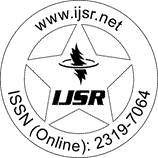Downloads: 111 | Views: 310
Research Paper | Computer Science & Engineering | Iraq | Volume 6 Issue 5, May 2017 | Popularity: 6.6 / 10
Automatic Brain Tumor Segmentation from MRI Images Using Region Growing Algorithm
Loay K. Abood, Raghda A. Ali, Makki Maliki
Abstract: MRI (Magnetic Resonance Imaging) is a technique which helps the physician to visualize the structures of internal organs of human body. Hence segmentation is necessary, it is difficult to identify the boundaries of abnormal regions in the MRI images. Subjective segmentation techniques need high attention with such images and time consuming problems, while objective segmentation techniques facing lots of challenging. However, identification rate accuracy is high. This paper presents a fully automation segmentation technique of MRI brain images. These images are segmented based on selection seed point objectively by improving Region Growing Algorithm. To control region growing process, fixable threshold is selected for each region. The Algorithm has been tested on different normal/abdominal MRI images samples. The results showed that the proposed algorithm is encouraging and efficient of selecting seed point as well as segmenting the MRI images without manual intervention.
Keywords: Image Segmentation, Automatic Region Growing, MRI, Brain Tumor
Edition: Volume 6 Issue 5, May 2017
Pages: 1592 - 1595
Make Sure to Disable the Pop-Up Blocker of Web Browser
